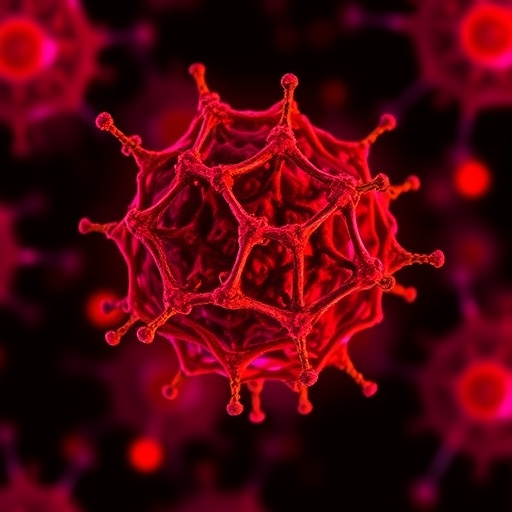Adenoid cystic carcinoma (ACC) represents a perplexing and stubborn challenge within the realm of salivary gland malignancies. Despite its characteristically slow progression, this rare cancer exhibits an aggressively invasive nature, marked by perineural invasion, frequent recurrences, and the propensity for distant metastases. These features not only complicate clinical management but also underscore the urgent demand for novel and effective treatment strategies. Current systemic therapies often fall short, largely due to the resilience of the cancer stem cells (CSCs), a subpopulation within tumors that resist conventional interventions and drive disease relapse.
In a groundbreaking study recently published in BMC Cancer, researchers embarked on an ambitious quest to decode the selective vulnerabilities of ACC at an epigenetic level. This investigation deployed a comprehensive high-throughput screening platform, examining a vast library of 157 histone modifying drugs (HMDs) with the aim of targeting both bulk tumor cells and the elusive CSC populations. The study leveraged the UM-HACC-2A cell line, an established model of ACC, to distinguish the varied sensitivities between these two critical subpopulations in vitro.
The methodological approach was notable for its dual in vitro modeling system: conventional two-dimensional (2D) cultures designed to mimic the bulk, non-CSC tumor environment, and three-dimensional (3D) tumorspheres that enrich for CSCs. This design facilitated a nuanced understanding of how different classes of epigenetic inhibitors impact distinct cellular compartments within the tumor mass. Through the use of automated liquid handling and high-content imaging technologies—specifically, ImageXpress for image acquisition and MetaXpress for sophisticated image analysis—the team achieved a rigorous and reproducible quantification of cell viability and tumorsphere dynamics following drug exposure.
Results from this extensive screening revealed a fascinating divergence in drug efficacy between CSCs and non-CSCs. Fourteen candidate compounds emerged as potent inducers of apoptosis in the bulk tumor population, while eleven agents showed significant cytotoxic effects against tumorsphere-enriched CSCs. Key molecular targets identified among these hits spanned several histone modifying enzymes and associated epigenetic regulators, including histone deacetylases (HDACs), histone methyltransferases, EZH2, the c-RET kinase, and epidermal growth factor receptor (EGFR).
Particularly striking was the performance of ITF2357, also known as Givinostat, a histone deacetylase inhibitor that triggered an impressive 84% cell death in non-CSC populations, a level of efficacy that was highly statistically significant (p < 0.0001). In parallel, histone methyltransferase inhibitors UNC0631 and LLY-507 also demonstrated potent cytotoxicity in similar ranges (82.5% and 82.3% cell death, respectively), highlighting the promise of targeting methylation-modifying enzymes as a therapeutic strategy.
Conversely, in the CSC-enriched 3D tumorsphere model, where therapeutic resistance is most evident, the EZH2 inhibitor GSK343 exhibited notable activity, achieving 35.2% cell death with strong statistical significance. This differential response underscores the unique epigenetic landscapes and vulnerabilities present within cancer stem cells compared to their non-stem counterparts. The ability of EZH2 inhibition to impair tumorsphere viability suggests a critical role for histone methylation in CSC maintenance and survival.
Intriguingly, combination assays that paired effective agents identified separately against CSCs and non-CSCs unveiled synergistic interactions. These combinations substantially enhanced tumor cell death beyond what was observed with either drug alone, suggesting that a multipronged epigenetic therapy could overcome the heterogeneity and inherent resistance within ACC tumors. This combinatorial approach points toward personalized treatment regimens that concurrently disrupt multiple oncogenic pathways in both stem and bulk tumor compartments.
The implications of these findings stretch far beyond the immediate context of ACC. They offer compelling evidence that cancer stem cells and their differentiated progeny exhibit discrete epigenetic dependencies that require tailored therapeutic targeting. While epigenetic modulators have garnered attention across various malignancies, this study highlights their strategic utility against one of the most recalcitrant salivary gland cancers, providing a vital foothold in the pursuit of more effective therapies.
Not only does this research elevate our mechanistic understanding of ACC pathobiology, but it also lays the preclinical groundwork for advancing histone modifying drugs into clinical trials. The capacity to selectively eradicate CSCs, which drive metastatic spread and treatment resistance, alongside bulk tumor cells, may ultimately translate into improved patient outcomes and prolonged survival.
Moreover, this study exemplifies the power of integrating high-content screening with sophisticated in vitro models to dissect cellular heterogeneity and drug responsiveness at an unprecedented resolution. Such technical innovation paves the way for accelerated drug discovery and precision oncology strategies, especially for rare and poorly understood cancers like ACC.
Despite these promising advances, several questions remain open for exploration. The precise molecular mechanisms underpinning the differential sensitivity of CSCs versus non-CSCs to various histone modifiers need further elucidation. Additionally, validating these findings in in vivo ACC models and determining optimal dosing regimens and toxicity profiles will be critical steps toward clinical translation.
Furthermore, longitudinal studies tracking epigenetic changes during treatment could illuminate potential resistance pathways and identify biomarkers for therapy response. The integration of genomic and epigenomic data in ACC could deepen insights into tumor evolution and reveal new therapeutic targets.
In conclusion, this pioneering work by Emerick et al. opens a new chapter in the fight against adenoid cystic carcinoma by uncovering the selective impacts of histone modifying drugs on tumor subpopulations. It supports the growing paradigm that effective cancer therapies must address intratumoral complexity through combination regimens tailored to target both cancer stem cells and their differentiated progeny. As such, this research represents a beacon of hope, steering the oncology community closer to overcoming the therapeutic impasse posed by ACC and similar challenging malignancies.
Subject of Research: Selective impact of histone modifying drugs on adenoid cystic carcinoma bulk tumor cells and cancer stem cells.
Article Title: Assessing the selective impact of histone modifying drugs on adenoid cystic carcinoma cells and their stem cell counterparts.
Article References:
Emerick, C., Silva, L.C., Jang, Y. et al. Assessing the selective impact of histone modifying drugs on adenoid cystic carcinoma cells and their stem cell counterparts. BMC Cancer 25, 1277 (2025). https://doi.org/10.1186/s12885-025-14739-z
Image Credits: Scienmag.com




